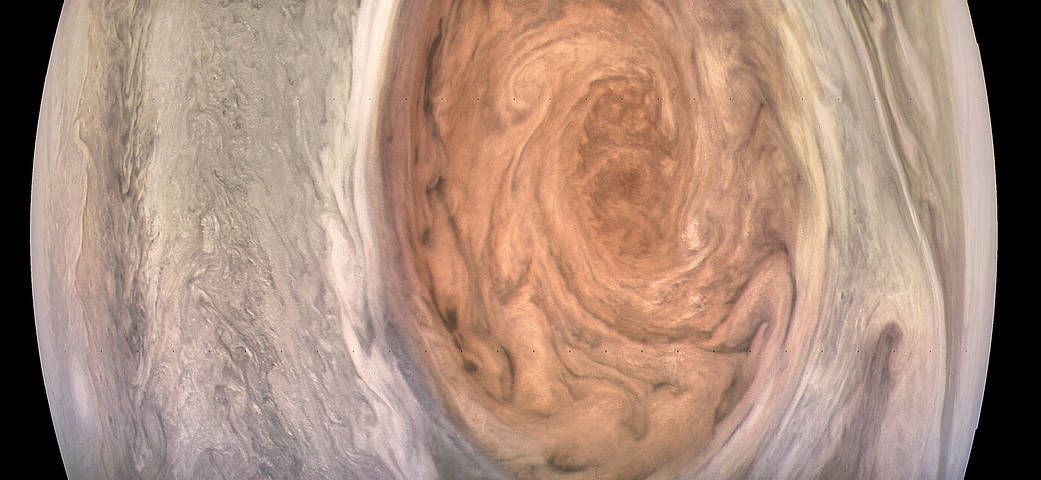
NASA's Jet Propulsion Laboratory (JPL) found that Jupiter's Great Red Spot—the huge atmospheric storm that is the planet's signature feature—extends hundreds of miles into the planet's atmosphere. Data that Juno collected earlier this summer indicates that the Great Red Spot extends more than 200 miles into Jupiter's atmosphere, according to NASA.
"The closer you get to Jupiter, the weirder it gets," said Heidi Becker, Juno's radiation monitoring investigation lead at JPL, in a NASA release.
The findings were announced Monday at a presentation at the American Geophysical Union meeting in New Orleans, Louisiana.
How Deep is Your Red? @NASAJuno investigates the depth of #Jupiter’s Great Red Spot https://t.co/dcPGOuwNSo pic.twitter.com/QhQwlLjkaT
— NASA JPL (@NASAJPL) December 11, 2017
The Great Red Spot is, by all accounts, Juno's best known feature. It is a storm of red clouds that swirls across Jupiter's southern hemisphere. The spot is reportedly 1.3 times as wide as planet Earth. And, according to NASA, it moves with wind speeds "greater than any storm on earth."
The new findings show that the storm extends "50 to 100 times deeper" than planet Earth's oceans. JPL researchers told NASA that this depth, along with the heat of the storm, explains some of the Great Red Spot's better known features, including it's out-of-this-world winds.. The base of the Great Red Spot was found to be extremely warm. And, according to NASA, winds are associated with steep differences in temperature.
Images of the Great Red Spot taken as Juno passed over Jupiter in July are stunning. These glimpses of Jupiter's atmosphere, which look " like cream swirling in coffee," are the product of an army of space enthusiasts that process the images captured by Juno into ones that can captivate the human eye.
A raging storm 1.3 times as wide as Earth churns on Jupiter’s surface. Known as the Great Red Spot, this storm is being studied by our @NASAJuno spacecraft. Take a simulated flight into the depths of the storm: https://t.co/VJwALZaWmm pic.twitter.com/c5moJYW5Pl
— NASA (@NASA) December 12, 2017
The probe before Juno, Galileo, was sent to explore the planet in December 1995. The idea with that mission was to drop Galileo into Jupiter's atmosphere to help scientists better understand what the atmosphere is made up of. According to Business Insider, expectation didn't much meet reality.
Juno was launched in August, 2011, with the goal of helping scientists understand more about the "origin and evolution" of the planet Jupiter. Looking into the Great Red Spot, as well as determining the amount of water in the planet's atmosphere and mapping it's gravity and magnetic fields is all part of putting theories of planet formation to the test.
According to Reuters, the Great Red Spot has been continuously monitored in some form from Earth since 1830.
This most recent discovery was made thanks to data from Juno's most recent trip over Jupiter, which was widely reported on at the time. The next and ninth flyby will be on Saturday, December 16.
Uncommon Knowledge
Newsweek is committed to challenging conventional wisdom and finding connections in the search for common ground.
Newsweek is committed to challenging conventional wisdom and finding connections in the search for common ground.
About the writer
Joseph Frankel is a science and health writer at Newsweek. He has previously worked for The Atlantic and WNYC.
To read how Newsweek uses AI as a newsroom tool, Click here.








